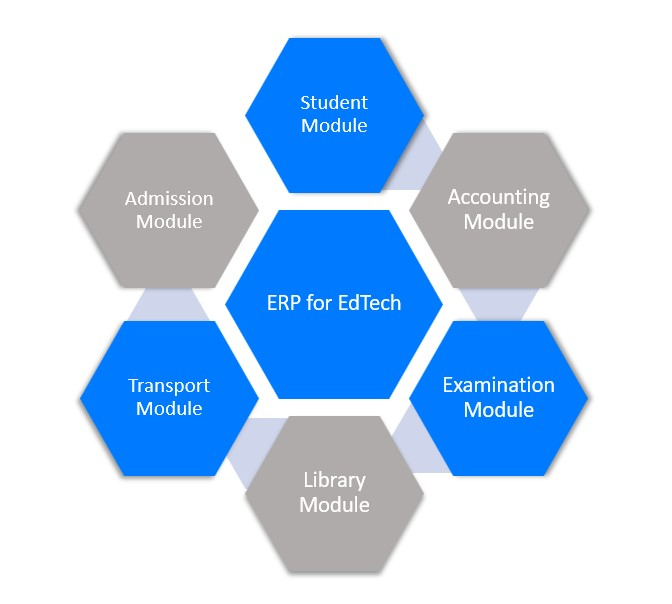What is Education ERP?
Education Enterprise Resource Planning (ERP) is a category of software created especially for educational institutions like colleges, universities, and schools. For handling numerous operations and procedures in the educational sector, including student information management, admission and enrollment, financial management, HR and payroll, and learning management, it offers a comprehensive solution.
An education ERP's objectives include streamlining procedures, increasing effectiveness, and giving parents, instructors, and students access to information in real time. This lessens the workload and expenses associated with administration while enabling educational institutions to concentrate on their primary goal of providing high-quality education.
Benefits of Implementing ERP in Education Sector
Improved Data Management: ERP systems offer a single database for storing and managing student and institutional data, lowering the risk of data loss or inaccuracies.
Enhanced Decision-Making: Administrators and instructors can make decisions that have a beneficial influence on student outcomes when they have real-time access to data.
Enhanced Efficiency: Automating administrative processes including admissions and enrollment, money management, and human resources can lighten the administrative load and boost the institution's general efficiency.
Enhanced Student Engagement: Education ERP systems frequently come with tools like online portals and mobile apps that give students access to information and resources, enhancing student engagement.
Financial Management: ERP systems can assist educational institutions in managing budgets, keeping track of expenditures, and analyzing financial data, which results in more efficient financial management.
Streamlined Communication: ERP systems can make it easier for parents, teachers, and students to communicate with one another, fostering a more cooperative learning environment.
Regulation Compliance: ERP systems can assist educational institutions in complying with a number of regulations, including data protection and privacy legislation.
ERP Module for Education world
ERP provides many modules to improve education sector. Let's see some of the modules

ERP integrates numerous management procedures into a single, centralized platform, including student data management, transportation management, financial management, library administration, and others. By offering real-time access to accurate and current information, it aids educational institutions in streamlining their operations.
It also gives organizations the ability to monitor key performance indicators and provide reports that enhance overall efficiency and decision-making. ERP offers a complete and integrated solution for managing many elements of a school, freeing up administrators to concentrate on giving pupils a high-quality education.
How to Implement ERP for Education Sector
Implementing an Enterprise Resource Planning (ERP) system for education requires careful planning and execution. Here are the simple steps involved in implementing an ERP system in education

Define Objective: This will facilitate the selection of the ideal ERP solution and guarantee that it meets the requirements of the educational institution.
Analyze ERP Solutions: Compare various ERP solutions according to their features, price, and vendor support. Choose a solution that satisfies the educational institution's unique needs after taking those needs into account.
Implementation Planning: Create a project plan, identify the data that needs to be migrated, and gather information about the current systems and procedures to prepare for the implementation.
Migration of Data: Transferring current data onto the new ERP system. This is a crucial step in the implementation process, and it needs to be planned and carried out with care.
Test and Validate: To make sure the ERP system satisfies the criteria and performs as anticipated, it should be properly tested.
User Training: Provide user training on how to utilize the new ERP system for administrators, teachers, and students. This will make sure they can utilise all of the system's capabilities and advantages.
Go Live: Ensure that the ERP system goes live and that any difficulties are resolved as fast and effectively as possible.
Monitor and Maintain: After implementation, monitor the ERP system and make any necessary upgrades and modifications. The system will continue to satisfy the needs of the educational institution with regular upkeep and updates.
Conclusion
A more effective and efficient operation can result from integrating an ERP system into a school, freeing up teachers to concentrate on providing pupils with a high-quality education. To fully realise the advantages of ERP in education, it is crucial to properly assess and select the best ERP solution, as well as to have a well-planned and executed installation process.
We are just a call away to help you grow. Contact Us